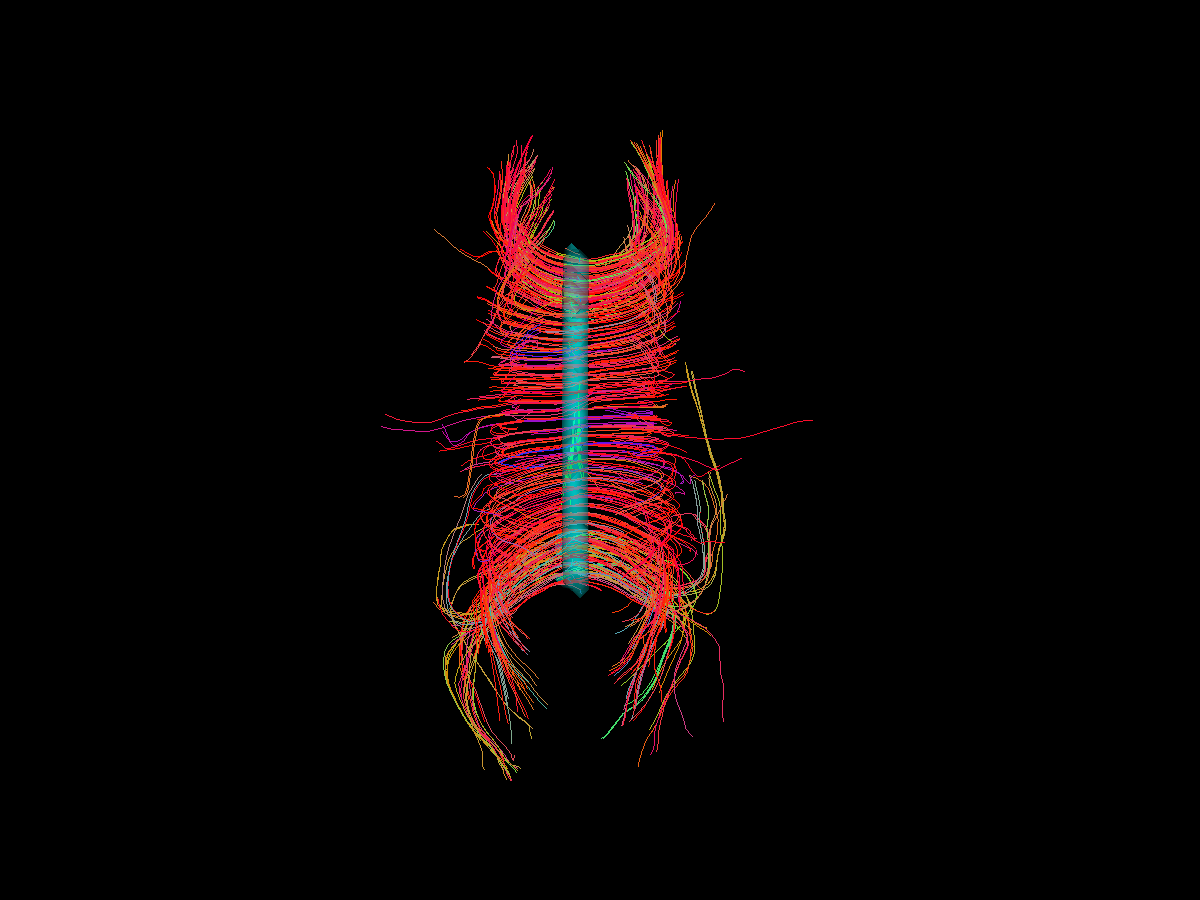Visualization of ROI Surface Rendered with Streamlines¶
Here is a simple tutorial following the probabilistic CSA Tracking Example in which we generate a dataset of streamlines from a corpus callosum ROI, and then display them with the seed ROI rendered in 3D with 50% transparency.
from dipy.data import read_stanford_labels
from dipy.reconst.shm import CsaOdfModel
from dipy.data import default_sphere
from dipy.direction import peaks_from_model
from dipy.tracking.stopping_criterion import ThresholdStoppingCriterion
from dipy.tracking import utils
from dipy.tracking.local_tracking import LocalTracking
from dipy.tracking.streamline import Streamlines
from dipy.viz import actor, window, colormap as cmap
First, we need to generate some streamlines. For a more complete description of these steps, please refer to the CSA Probabilistic Tracking Tutorial.
hardi_img, gtab, labels_img = read_stanford_labels()
data = hardi_img.get_data()
labels = labels_img.get_data()
affine = hardi_img.affine
white_matter = (labels == 1) | (labels == 2)
csa_model = CsaOdfModel(gtab, sh_order=6)
csa_peaks = peaks_from_model(csa_model, data, default_sphere,
relative_peak_threshold=.8,
min_separation_angle=45,
mask=white_matter)
stopping_criterion = ThresholdStoppingCriterion(csa_peaks.gfa, .25)
seed_mask = labels == 2
seeds = utils.seeds_from_mask(seed_mask, affine, density=[1, 1, 1])
# Initialization of LocalTracking. The computation happens in the next step.
streamlines = LocalTracking(csa_peaks, stopping_criterion, seeds, affine,
step_size=2)
# Compute streamlines and store as a list.
streamlines = Streamlines(streamlines)
We will create a streamline actor from the streamlines.
streamlines_actor = actor.line(streamlines, cmap.line_colors(streamlines))
Next, we create a surface actor from the corpus callosum seed ROI. We provide the ROI data, the affine, the color in [R,G,B], and the opacity as a decimal between zero and one. Here, we set the color as blue/green with 50% opacity.
surface_opacity = 0.5
surface_color = [0, 1, 1]
seedroi_actor = actor.contour_from_roi(seed_mask, affine,
surface_color, surface_opacity)
Next, we initialize a ‘’Renderer’’ object and add both actors to the rendering.
ren = window.ren()
ren.add(streamlines_actor)
ren.add(seedroi_actor)
If you uncomment the following line, the rendering will pop up in an interactive window.
interactive = False
if interactive:
window.show(ren)
window.record(ren, out_path='contour_from_roi_tutorial.png', size=(1200, 900))

A top view of corpus callosum streamlines with the blue transparent seed ROI in the center.¶
Example source code
You can download the full source code of this example. This same script is also included in the dipy source distribution under the doc/examples/ directory.
